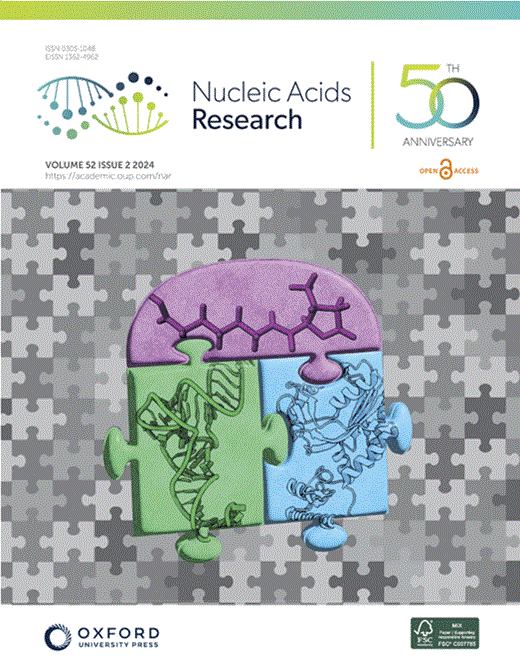Switchable RNA motifs for dynamic transcriptional control of RNA condensates.
IF 16.6
2区 生物学
Q1 BIOCHEMISTRY & MOLECULAR BIOLOGY
引用次数: 0
Abstract
RNA-driven phase separation is emerging as a promising approach for engineering biomolecular condensates with diverse functionalities. Condensates form thanks to weak yet specific RNA-RNA interactions established by design via complementary sequence domains. Here, we demonstrate how RNA condensates formed by star-shaped RNA motifs, or nanostars, can be dynamically controlled when the motifs include additional linear or branch-loop domains that facilitate access of regulatory RNA molecules to the nanostar interaction domains. We show that condensates dissolve in the presence of RNA "invaders" that occlude selected nanostar bonds and reduce the valency of the nanostars, preventing phase separation. We further demonstrate that the introduction of "anti-invader" strands, complementary to the invaders, makes it possible to restore condensate formation. An important aspect of our experiments is that we demonstrate these behaviors in one-pot reactions, where RNA nanostars, invaders, and anti-invaders are simultaneously transcribed in vitro using short DNA templates. Our results lay the groundwork for engineering RNA-based assemblies with tunable, reversible condensation, providing a promising toolkit for synthetic biology applications requiring responsive, self-organizing biomolecular materials.可切换RNA基序用于RNA凝聚物的动态转录控制。
rna驱动相分离是一种具有多种功能的工程生物分子凝聚物的有前途的方法。冷凝物的形成要归功于通过互补序列结构域设计建立的弱而特异性的RNA-RNA相互作用。在这里,我们展示了星形RNA基序或纳米星形成的RNA凝聚体是如何被动态控制的,当基序包含额外的线性或分支环结构域时,这些结构域有助于调控RNA分子进入纳米星相互作用结构域。我们发现冷凝物在RNA“入侵者”存在的情况下溶解,这些“入侵者”会封闭选定的纳米星键并降低纳米星的价,从而阻止相分离。我们进一步证明,引入“抗入侵”链,与入侵者互补,使恢复凝析油形成成为可能。我们实验的一个重要方面是,我们在一锅反应中证明了这些行为,在这种反应中,RNA纳米星、入侵者和抗入侵者在体外使用短DNA模板同时转录。我们的研究结果为基于rna的可调、可逆缩合的工程组装奠定了基础,为需要响应性、自组织生物分子材料的合成生物学应用提供了一个有前途的工具包。
本文章由计算机程序翻译,如有差异,请以英文原文为准。
求助全文
约1分钟内获得全文
求助全文
来源期刊

Nucleic Acids Research
生物-生化与分子生物学
CiteScore
27.10
自引率
4.70%
发文量
1057
审稿时长
2 months
期刊介绍:
Nucleic Acids Research (NAR) is a scientific journal that publishes research on various aspects of nucleic acids and proteins involved in nucleic acid metabolism and interactions. It covers areas such as chemistry and synthetic biology, computational biology, gene regulation, chromatin and epigenetics, genome integrity, repair and replication, genomics, molecular biology, nucleic acid enzymes, RNA, and structural biology. The journal also includes a Survey and Summary section for brief reviews. Additionally, each year, the first issue is dedicated to biological databases, and an issue in July focuses on web-based software resources for the biological community. Nucleic Acids Research is indexed by several services including Abstracts on Hygiene and Communicable Diseases, Animal Breeding Abstracts, Agricultural Engineering Abstracts, Agbiotech News and Information, BIOSIS Previews, CAB Abstracts, and EMBASE.
 求助内容:
求助内容: 应助结果提醒方式:
应助结果提醒方式:


